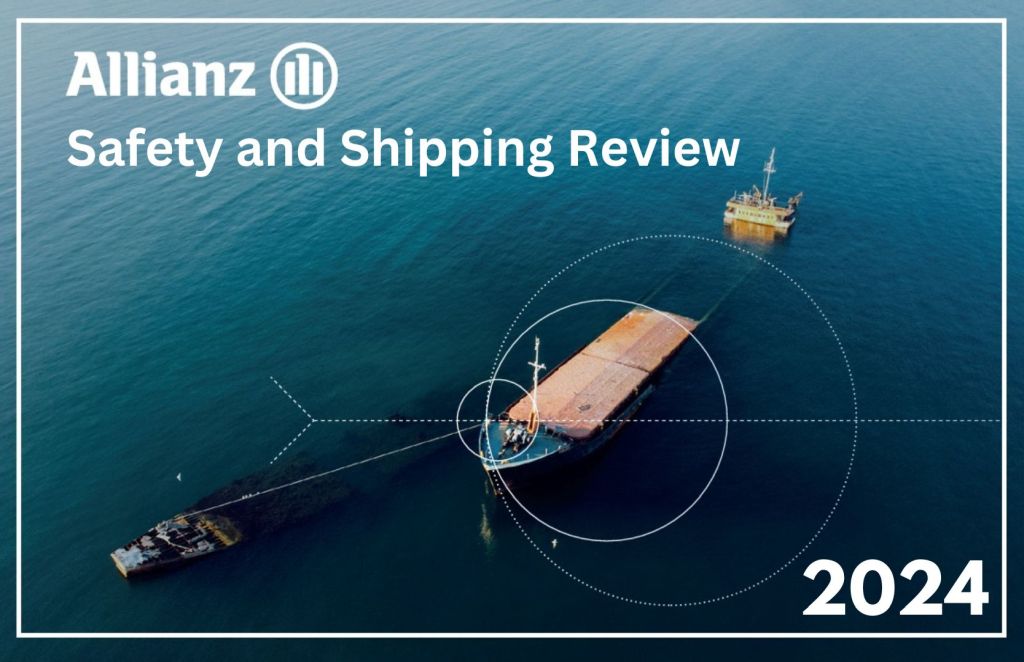
Maritime security threats in Red Sea and Gulf of Guinea
MUNICH : The maritime security landscape in the Red Sea and Gulf of Guinea (GoG) is marked by escalating threats and vulnerabilities. Recent Houthi attacks in the Red Sea have underscored the growing risks posed by relatively inexpensive and hard-to-detect drones. These drones, alongside anti-ship missiles and loitering munitions, have become central to Houthi tactics, targeting commercial vessels navigating the critical Bab al-Mandeb strait—a key chokepoint linking the Horn of Africa with the Middle East. The use of these advanced weapons highlights a troubling shift toward technologically sophisticated assaults against maritime assets, foreshadowing potential future threats to shipping, ports, and navigation systems.
The impact of these security challenges is tangible. Houthi drone and missile attacks have severely disrupted shipping routes, affecting global trade flows. According to recent data taken by Safety and Shipping Review for 2024 by Allianz Commercial, transits through the Suez Canal dropped by over 42% at the beginning of 2024, with container traffic plummeting by 82% and specialized car-carrying ships in the Red Sea decreasing by more than half compared to the previous year.
According to Castor Vali Risk Management, the use of uncrewed aerial systems and missiles by Houthi militants is escalating the asymmetric threats facing maritime trade. As shipping routes increasingly reroute around the Cape of Good Hope, vessels will pass through the Gulf of Guinea, a region already marked by significant instability. With the potential influx of new, low-cost weapons, there is a growing risk that both the Red Sea and Gulf of Guinea could become permanent hotspots for maritime insecurity.
In the Gulf of Guinea, the situation reflects a different yet equally pressing issue. The region’s vast maritime resources, part of the so-called blue economy, remain largely untapped due to chronic “sea blindness”—a focus on land-based security at the expense of maritime considerations. This neglect has left countries in the GoG vulnerable to exploitation by criminal networks, exacerbating maritime insecurity. The lack of investment and strategic focus on maritime spaces has made these regions attractive targets for maritime crime.
In Nigeria, maritime security is further compromised by a high incidence of piracy. The country accounts for 80% of reported maritime piracy in the Gulf of Guinea, despite legislative efforts such as the Suppression of Piracy and Other Maritime Offences Act (SPOMO) of 2019. Nigeria recorded 35 piracy attacks in 2020, underscoring the ongoing severity of maritime crime despite regulatory measures.
Both regions stand high as for their overall risk profile. The “High” sovereign risk in the Gulf of Guinea and the “Very High” supply chain risk underscores the substantial economic and security challenges faced by countries in the region, while the Red Sea’s Very High sovereign and supply chain risks, exacerbated by sophisticated Houthi attacks.
As maritime trade increasingly reroutes through the Cape of Good Hope due to disruptions in the Red Sea, the Gulf of Guinea faces an exacerbated risk profile. The GoG’s “High” sovereign risk and “Very High” supply chain risk reflect a volatile environment, further complicated by the potential influx of new, inexpensive weapons. The possibility of these regions becoming permanent hotspots is heightened by the convergence of asymmetric threats and existing maritime vulnerabilities.
According to an analysis by Upply, the Gulf of Aden and Gulf of Guinea are ranked as significant hotspots for maritime trade. The high scores for both regions highlight their current and potential risks. Given the escalating threats and instability, particularly with the possibility of new, inexpensive weapons affecting maritime security, the Gulf of Guinea could soon emerge as another major region of instability.
